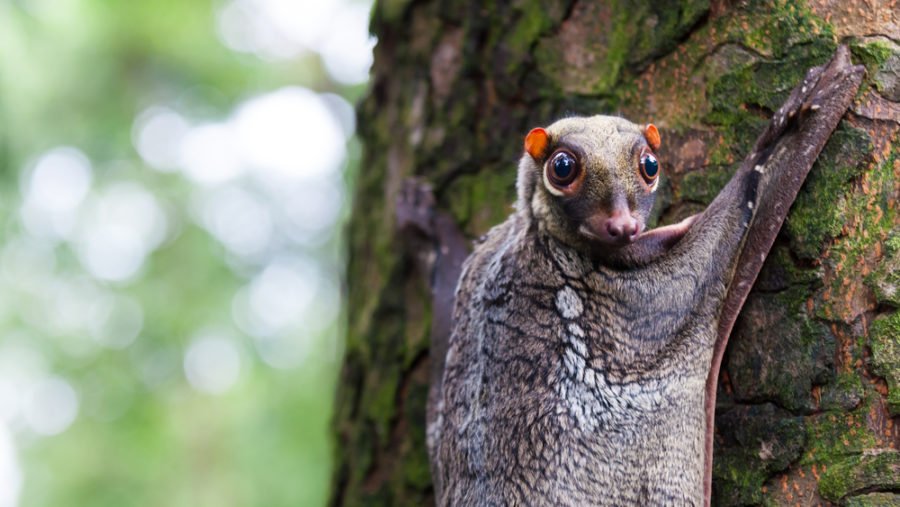The Sunda flying lemur not what it seems

Bec Crew
Bec Crew

DESPITE ITS NAME, the Sunda flying lemur (Galeopterus variegatus) is neither a lemur, nor something that can actually fly, but aside from bats, you’d be hard-pressed to find another mammal that’s as good as gliding as it is.
Native to the temperate forests of South East Asia, throughout Indonesia, Thailand, Malaysia, and Singapore, the Sunda flying lemur can glide for a distance of up to 100m, while only losing about 10m of elevation. According to the Walker’s Mammals of the World encyclopedia, one particularly talented individual was recorded gliding over a distance of 136m, which is about nine whole bus lengths. That’s amazing.
The key to the Sunda flying lemur’s impressive gliding skills is an enormous flap of leathery skin that runs from its face to the tips of its fingers, right down to the end of its tail, giving it a whole lot of surface area with which to keep itself aloft.
“Geometrically, it has the greatest surface area that you can have between those limbs without actually evolving an entire wing like bats did,” conservation biologist Jan Janecka of Duquesne University in the US told Matt Simon over at Wired.
They also have incredibly light and thin skeletons, which render their reasonably sized bodies – that can grow up to 38cm long (not including the tail) and can weigh just over a kilogram – so light, the females can glide even when they have a hefty little joey clinging to their backs.
What is the Sunda flying lemur?
So if the Sunda flying lemur isn’t a lemur, what actually is this non-flying, non-lemur creature? The species is classified as a ‘colugo’, of which there are just two known species in the world. The Sunda flying lemur’s slightly larger cousin, the Philippine flying lemur (Cynocephalus volans), is found exclusively in the Philippines.
Colugos have not only been blessed with the ability to almost-fly, but they also have, as Simon puts it, “combs built right into their faces”. Specifically, they are the proud owners of ‘toothcombs‘, which are unique dental structures found in certain types of mammals including actual lemurs, treeshrews, hyraxes, and some species of African antelopes. Also known as a ‘tooth scraper’, this series of elongated, closely aligned incisors are not only food for feeding, they appear to help these mammals comb parasites neatly out of their fur and pelts.
It might seem like the Sunda flying lemur is winning at life from all angles, but it’s got one pretty big weakness – it’s reportedly as clumsy on the ground as the notoriously awkward Australian greater glider.
In the lottery of life, you win some, you lose some, but I’d happily give up grace on land for toothcombs and gliding. Because that sounds like a tidy little package of pure convenience.

